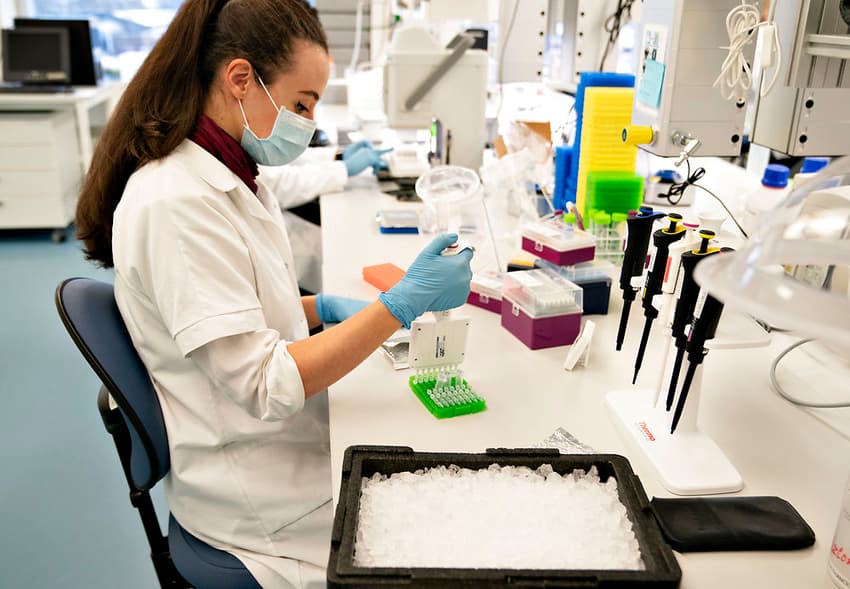How could infectious Covid-19 variant impact Denmark’s infection numbers?

Denmark is maintaining tight restrictions against Covid-19, due in part to concerns over the spread of the more infectious B117 variant. How much could the variant impact infection numbers?
A new report issued by the State Serum Institute (SSI), the national infectious disease agency, on Tuesday sets out prognoses for the expected effect of the B117 variant in Denmark’s infection numbers in coming months.
The prognoses will be used as the scientific background for ongoing management of the pandemic, SSI writes.
The B117 variant has previously been estimated to be between 50-74 percent more infectious than established forms of Covid-19.
It is expected to comprise 50 percent of all Covid-19 variants in circulation in Denmark by the middle of February, according to SSI’s report. It has been traced to have first appeared in Denmark in November, but was reported to have become established in the south east of England in December.
In the report, SSI states that it is crucial that spread of the B117 variant in Denmark is limited.
READ ALSO: Danish PM hints at new extension of Covid-19 lockdown despite drop in infections
“The prognoses for infection numbers at the start of April depend strongly on the relative reproduction rate of cluster B117, which describes how much higher the reproduction rate is for cluster B117 compared to other circulating variants,” said Dr. Camilla Holten Møller, professor and head of the SSI expert group behind the report.
The reproduction rate, also known as the R-number, is a measure of much the epidemic is spreading. If it is above 1.0, 10 people will infect at least another 10, and the virus will continue to spread. If it is below 1.0, the virus will recede.
According to SSI, the relative R-number for B117 is 1.36, which can be calculated to an actual reproduction rate of 1.16 (not relative to other variants). Denmark’s overall R-number is currently estimated to be 0.6. The calculations for B117 contain a degree of uncertainty due to limited data.
A relative R-number of 1.36 would result in infection numbers of 400 per day by the beginning of April, according to the report. If it is as high as 1.53, the daily infection numbers could be as high as 4,000 daily, close to the highest levels recorded in mid-December, when the winter wave of the virus was at its (hitherto) peak in Denmark. The calculations are based on an assumption that societal activity remains at the current level.
“In summary, we can say that B117, even with the current restrictions, has an R-number of over 1.0. The future course for infection rates is strongly dependent on how high the relative R-number for B117 develops along with the concurrent vaccine rollout and level of activity in society,” the report states.
Comments
See Also
A new report issued by the State Serum Institute (SSI), the national infectious disease agency, on Tuesday sets out prognoses for the expected effect of the B117 variant in Denmark’s infection numbers in coming months.
The prognoses will be used as the scientific background for ongoing management of the pandemic, SSI writes.
The B117 variant has previously been estimated to be between 50-74 percent more infectious than established forms of Covid-19.
It is expected to comprise 50 percent of all Covid-19 variants in circulation in Denmark by the middle of February, according to SSI’s report. It has been traced to have first appeared in Denmark in November, but was reported to have become established in the south east of England in December.
In the report, SSI states that it is crucial that spread of the B117 variant in Denmark is limited.
READ ALSO: Danish PM hints at new extension of Covid-19 lockdown despite drop in infections
“The prognoses for infection numbers at the start of April depend strongly on the relative reproduction rate of cluster B117, which describes how much higher the reproduction rate is for cluster B117 compared to other circulating variants,” said Dr. Camilla Holten Møller, professor and head of the SSI expert group behind the report.
The reproduction rate, also known as the R-number, is a measure of much the epidemic is spreading. If it is above 1.0, 10 people will infect at least another 10, and the virus will continue to spread. If it is below 1.0, the virus will recede.
According to SSI, the relative R-number for B117 is 1.36, which can be calculated to an actual reproduction rate of 1.16 (not relative to other variants). Denmark’s overall R-number is currently estimated to be 0.6. The calculations for B117 contain a degree of uncertainty due to limited data.
A relative R-number of 1.36 would result in infection numbers of 400 per day by the beginning of April, according to the report. If it is as high as 1.53, the daily infection numbers could be as high as 4,000 daily, close to the highest levels recorded in mid-December, when the winter wave of the virus was at its (hitherto) peak in Denmark. The calculations are based on an assumption that societal activity remains at the current level.
“In summary, we can say that B117, even with the current restrictions, has an R-number of over 1.0. The future course for infection rates is strongly dependent on how high the relative R-number for B117 develops along with the concurrent vaccine rollout and level of activity in society,” the report states.
Join the conversation in our comments section below. Share your own views and experience and if you have a question or suggestion for our journalists then email us at [email protected].
Please keep comments civil, constructive and on topic – and make sure to read our terms of use before getting involved.
Please log in here to leave a comment.